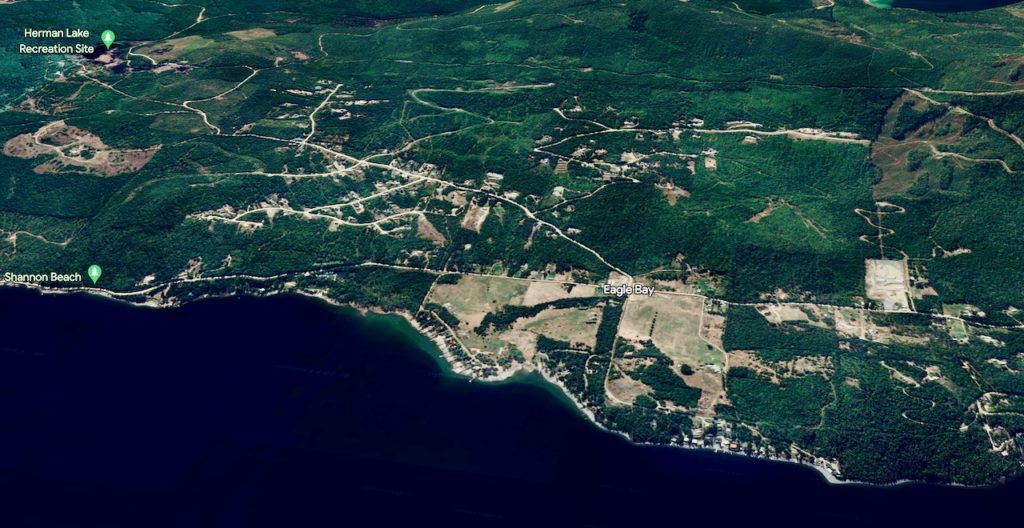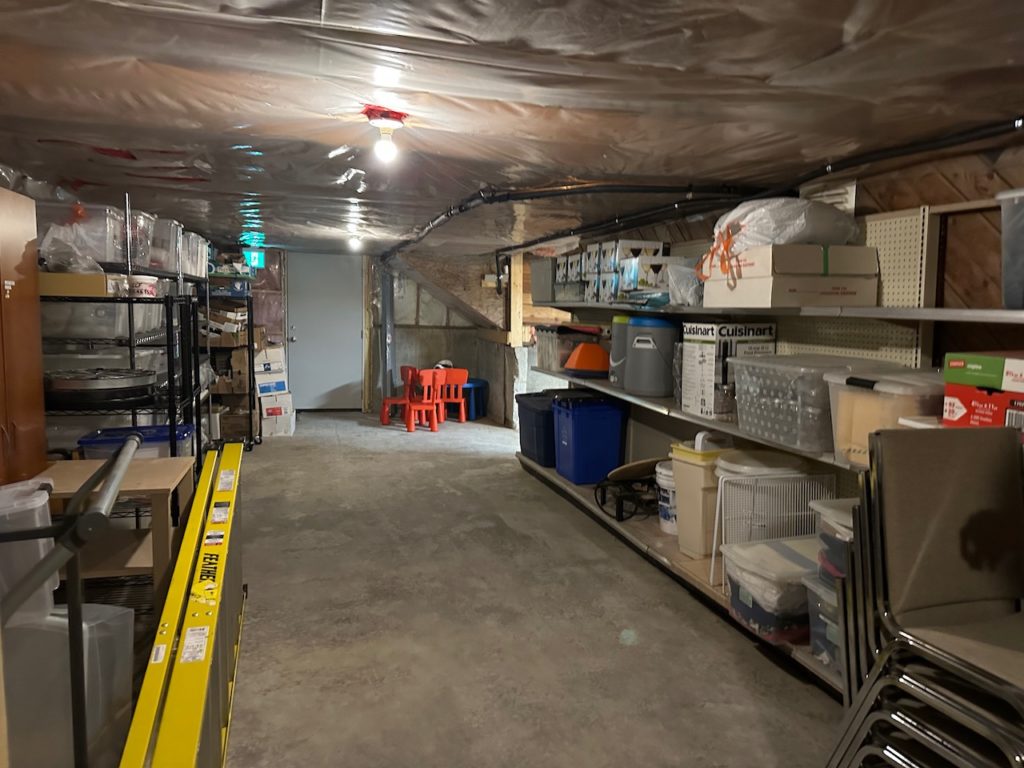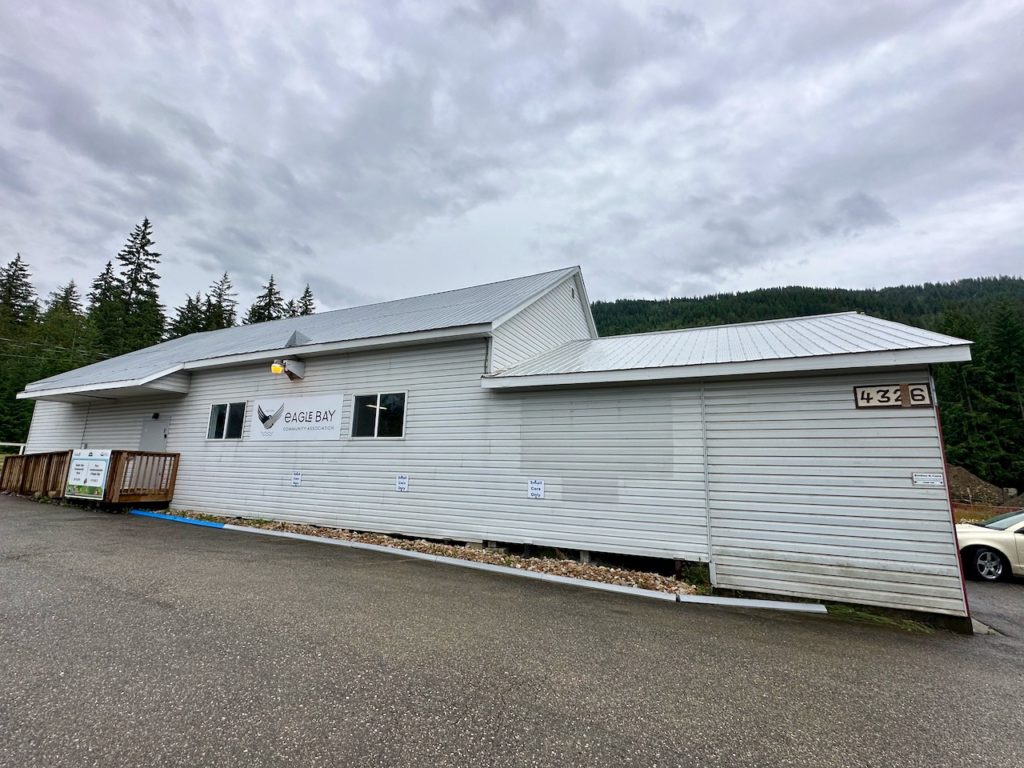
The rule of thumb that remote communities are more close-knit certainly applies to Eagle Bay, as its very successful community association has raised many thousands of dollars to make significant improvements to their hall. On the drive along the lakeside from Blind Bay, you will see many vacation homes nestled into the hills and along the shoreline, but there are also several neighbourhoods near the centre of the community that have an increasing number of year-round residents.
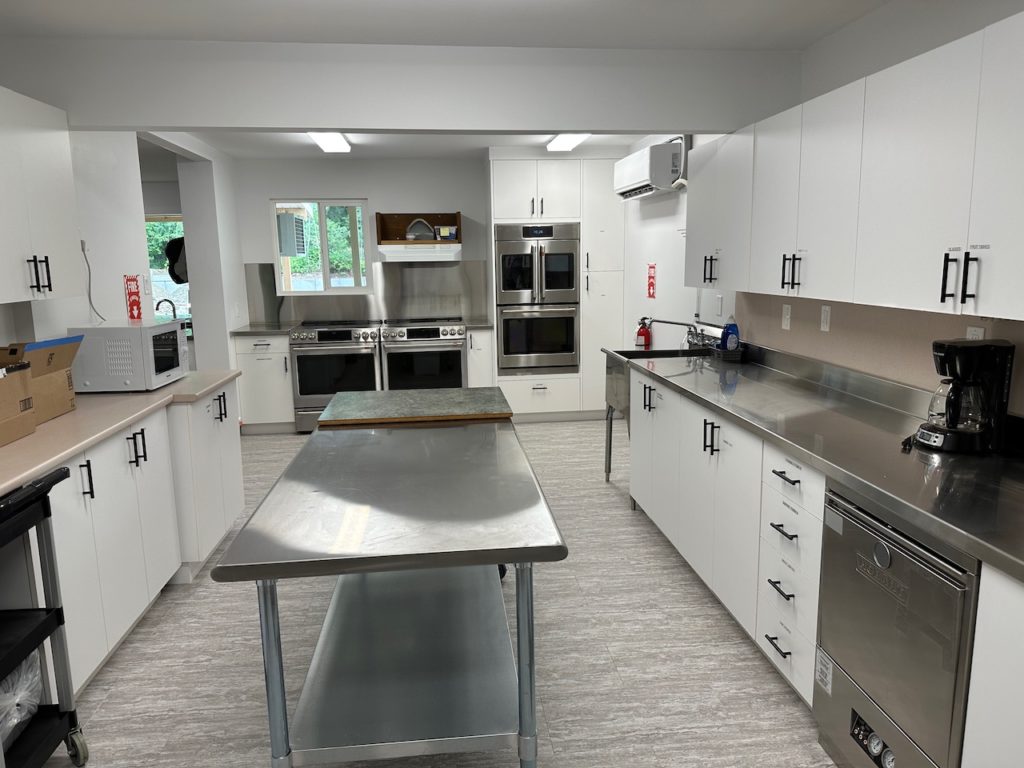
Recently, Eagle Bay Community Association president Cathy Wolf gave me a tour of the hall and provided details about the recent renovations. The project began with intensive planning to determine what needed to be done, how much funding was needed and how best to accomplish the tasks ahead. They divided the work into three stages, with the first stage now completed that focused on repairing the foundation, upgrading the electrical system, adding a third bathroom, and modernizing the kitchen.
The community was quite generous with donations for the project received from over 65 families and local businesses, as well as from the South Shuswap Arts Council, the Shuswap Community Association and SASCU. When the Association received charitable status, they were able to apply for grants and as a result, they obtained federal, provincial, and regional district funding.
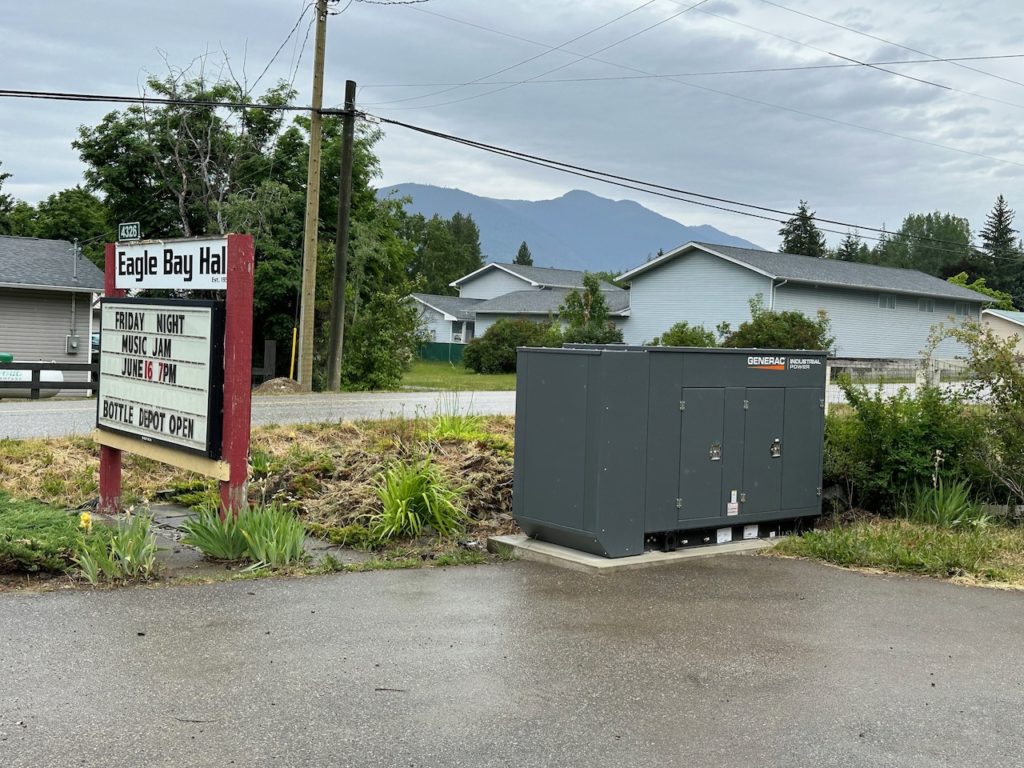
Their plan for stage two is to enable the hall to be a warming centre that could house and feed upwards of 110 people. Providing an alternative power source is key and so far, a generator has been purchased and the transformer has been installed, but to complete this project both the wires and the propane tanks need to be installed. The third stage, which first requires the approval of a majority of the members, would see the vinyl siding replaced with fire-proof cement fibre boards and the parking lot repaved.
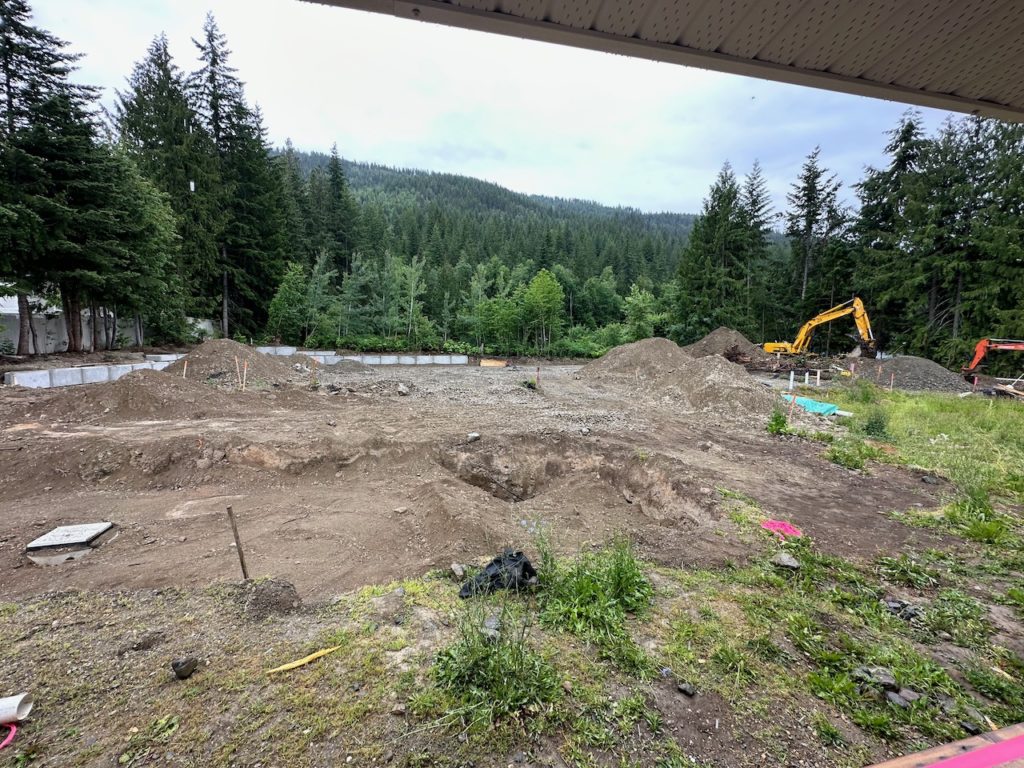
The field behind the hall where there had been an outdoor hockey rink, tennis court and picnic area is now a construction site, as the CSRD parks department is building playgrounds, courts for pickle ball and basketball, a space for outdoor adult fitness equipment and a picnic shelter. This project has been in the works for five years, but completion has been delayed due to a combination of soil issues and excessive red tape.
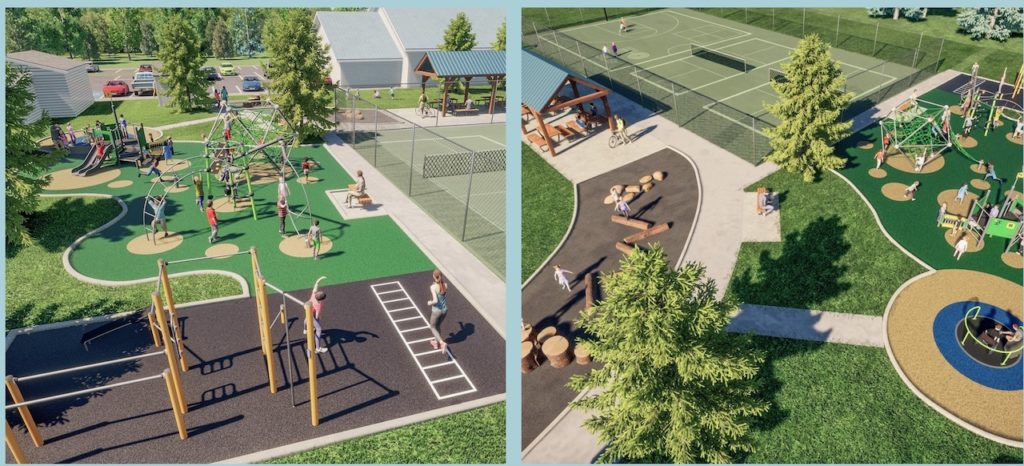
The hall is indeed the centre for the community and is used for many events, including crafts, fitness classes, kids play group, darts, and club meetings. Every fourth Saturday night there is a coffee house that includes a feature act and the hall’s house band, The Stumps, who play classic cover tunes and offer sing-a-longs. There is also a local amateur drama group, The Hamsters, who perform a yearly dinner theatre on the well-equipped stage.
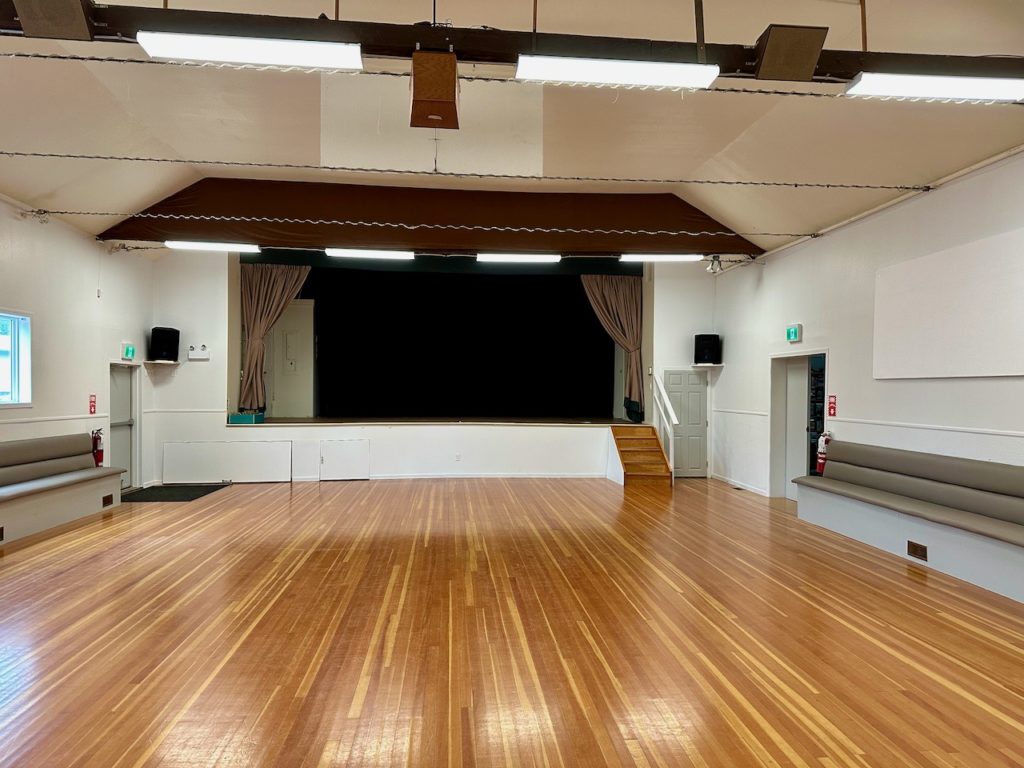
The highlight for the year, the annual Eagle Bay Day, has been a tradition since the 1940s and includes a pancake breakfast, kids’ games, and music and entertainment. This year, the event takes place on August 5th and the community has its fingers crossed that the playground project will be finished.
Although Eagle Bay began as a farming community, the land was not well suited for agriculture and most of the homesteaders depended upon income from forestry work. In the early 1970s, many landowners began to sell off lots for summer cabins and summer tourism began. As the population aged, the school closed, and Eagle Bay became more of a retirement community. In the last few years, families have moved to the community with young children, many of whom are being home schooled due to the long bus ride. Thanks to the addition of high-speed internet, residents can now work from home and there are an increasing number of home-based businesses.
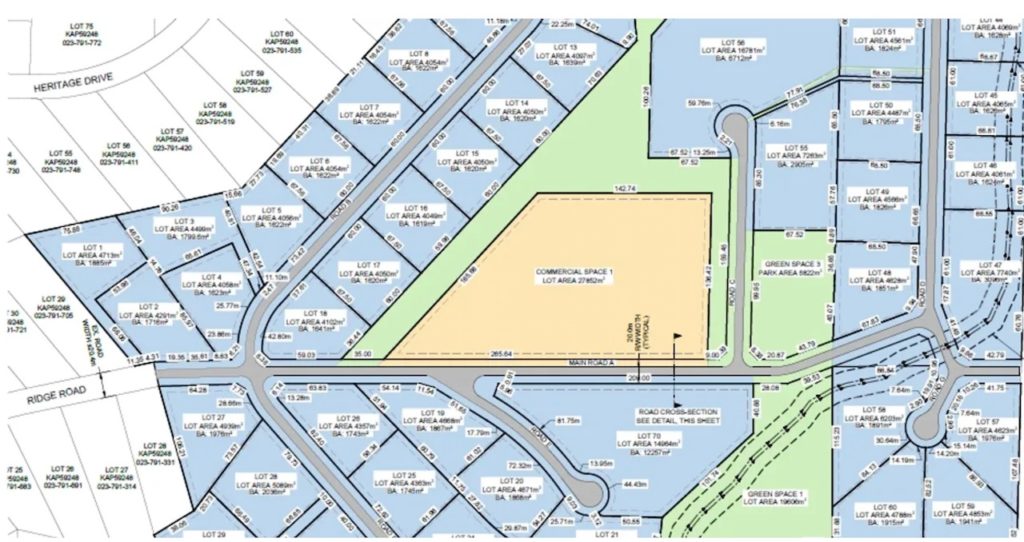
The current population of Eagle Bay is approximately 500 people, with about half living there full-time and soon, those numbers could grow substantially. A previous land development above Shannon Beach that failed after several homes were built has been purchased by FLR Developments. There is now a plan now to create up to 72 new lots that will be a minimum of one acre along with parkland green spaces and a trail to the beach. Given that each lot could include a secondary dwelling, if this development is completed, the population of Eagle Bay would increase substantially, as more people settle there to enjoy the quiet, rural lifestyle.
POSTSCRIPT
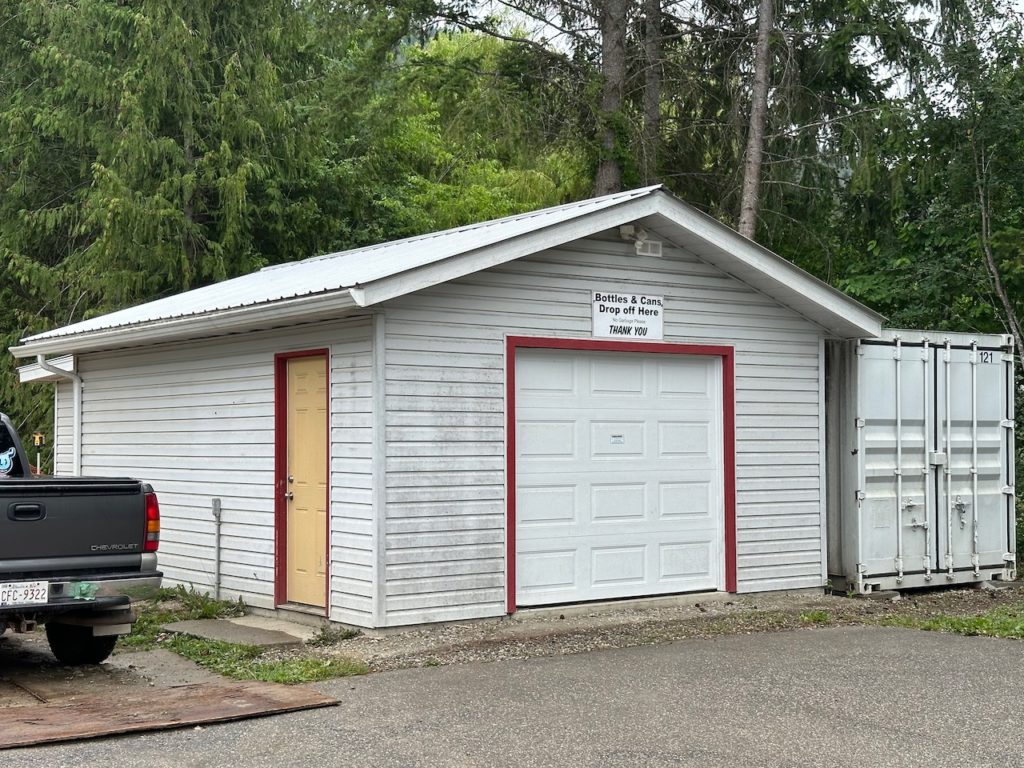
One of the big fund raisers for the community association is the bottle depot located near the hall where locals drop off their bottles and cans and volunteers sort them and then take them to a large depot to receive the refunds. This volunteer effort raises approximately $25,000 per year.
This fall, the Association will be sponsoring a first aid course at the hall, given that the community is located so far from medical services and relies on first responders for emergencies.
The neighbour behind the hall once offered to sell the community association a few acres to expand the park for a minimal cost, but the CSRD created too many obstacles making the subdivision impossible to create and the proposal was dropped. It was raining on the day I visited, and the new deck behind the hall was getting wet. When I asked why the roof did not extend out farther, I found out that the building permit would not allow this and this the deck will one day have to be replaced.
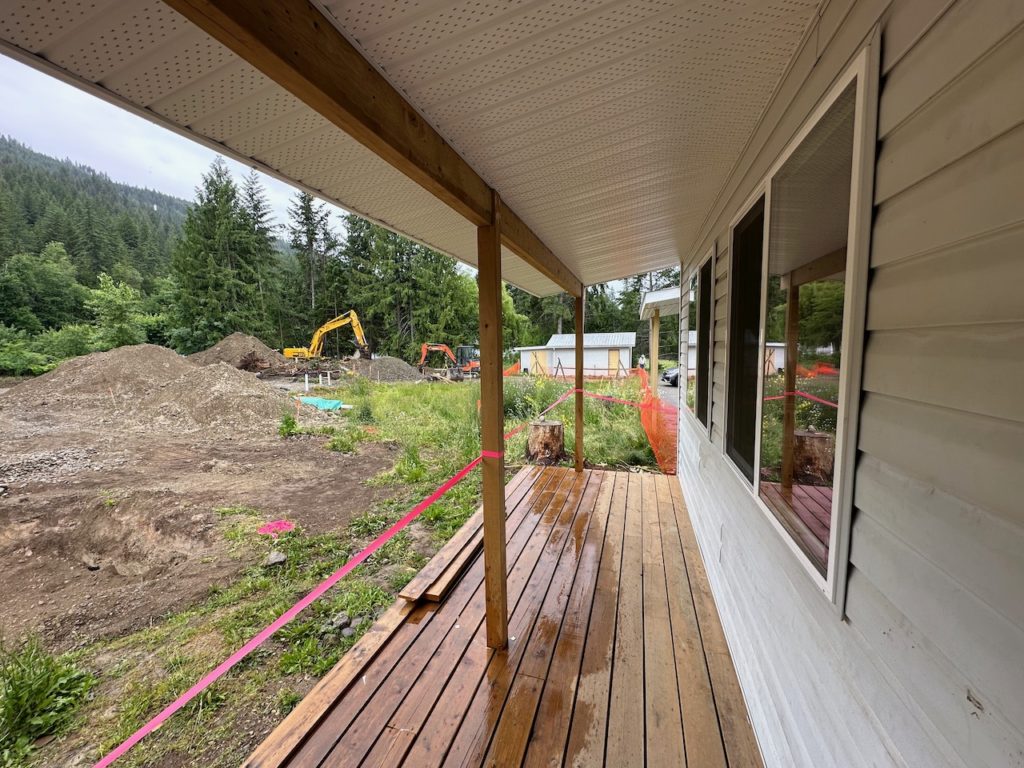
The Eagle Bay Community Association has an excellent website that provides a wealth of information about the community, including a section on its history. Visit the site here.
